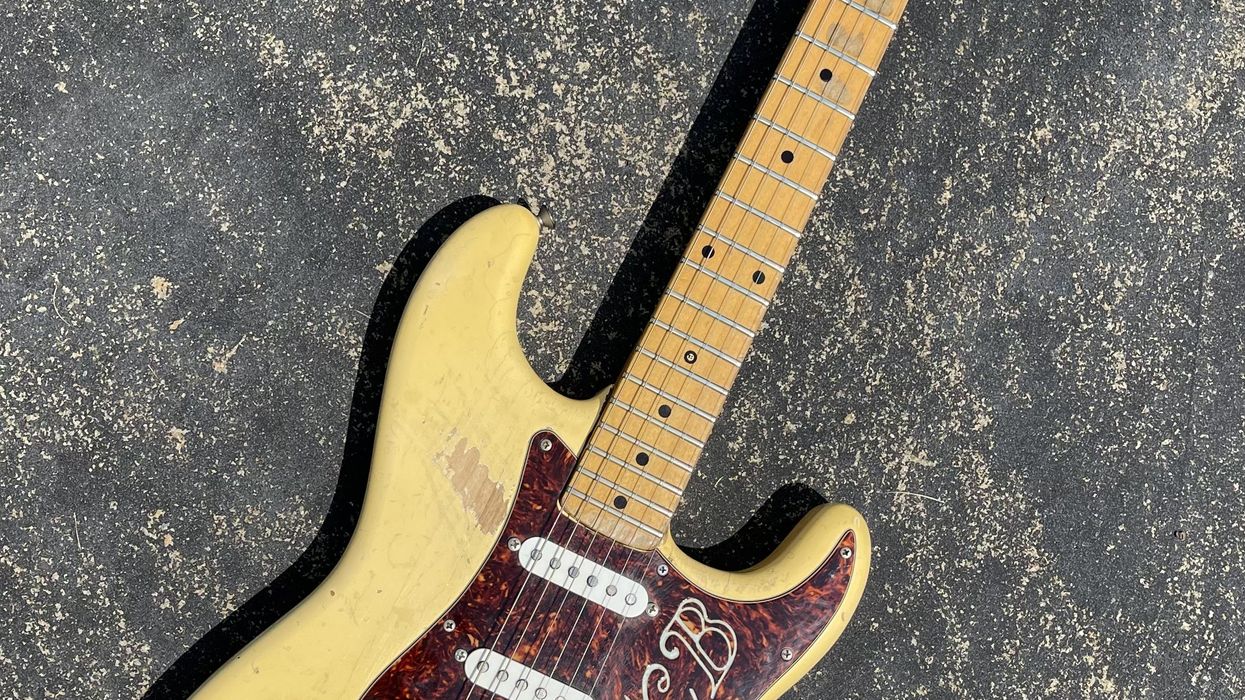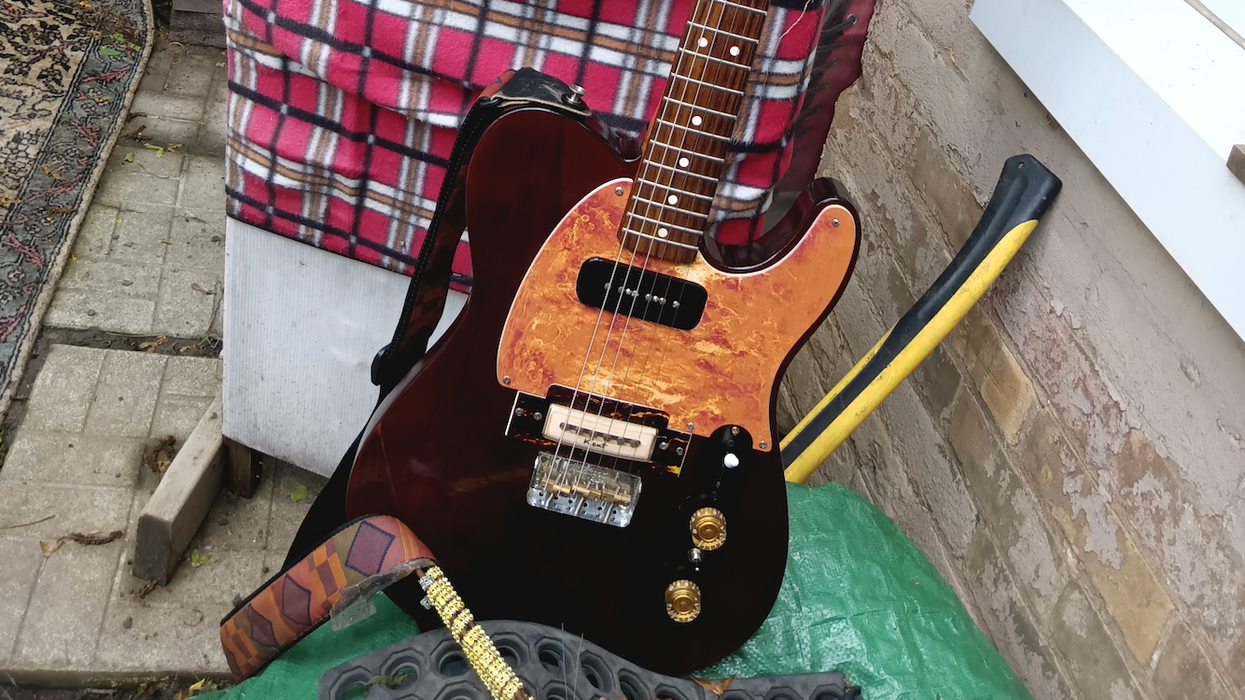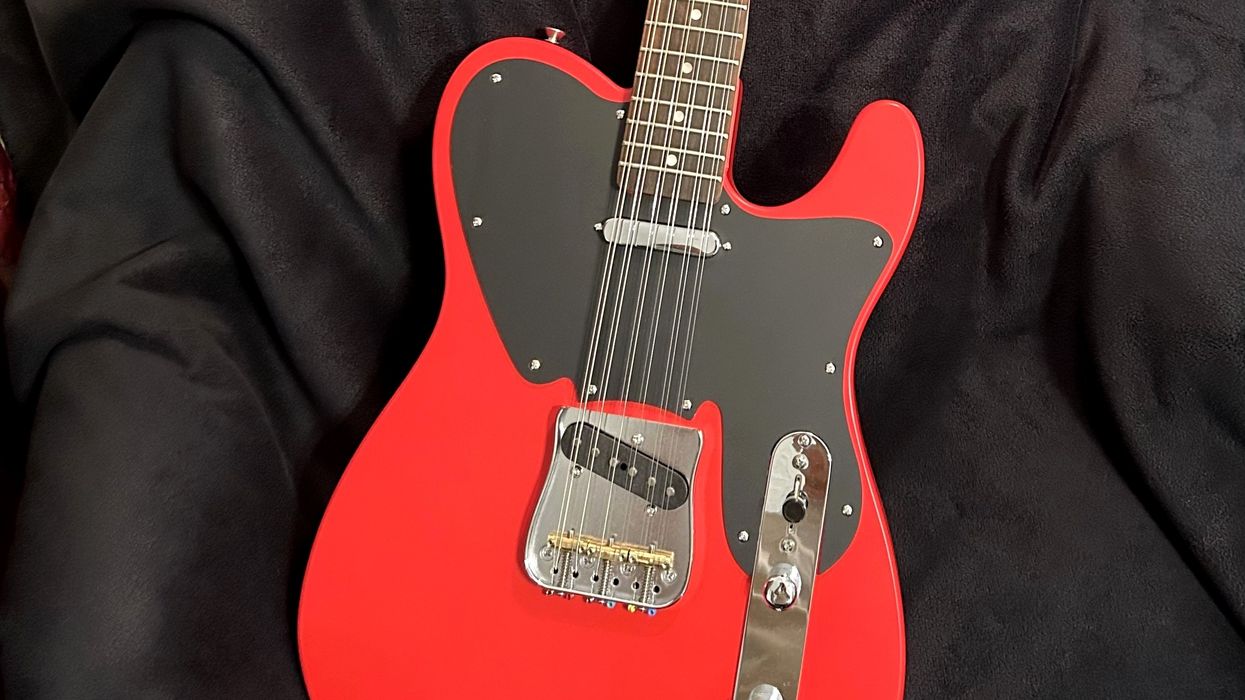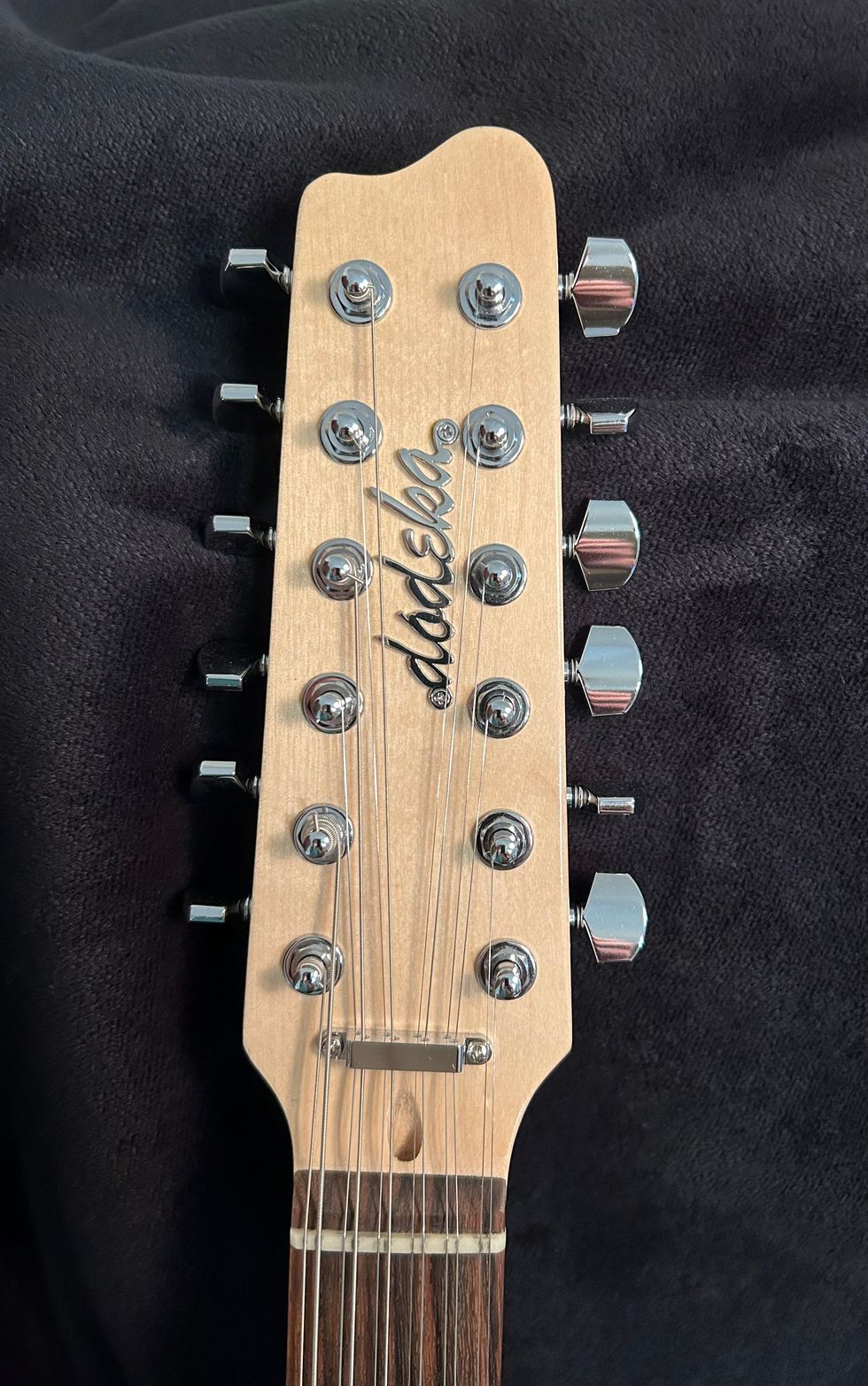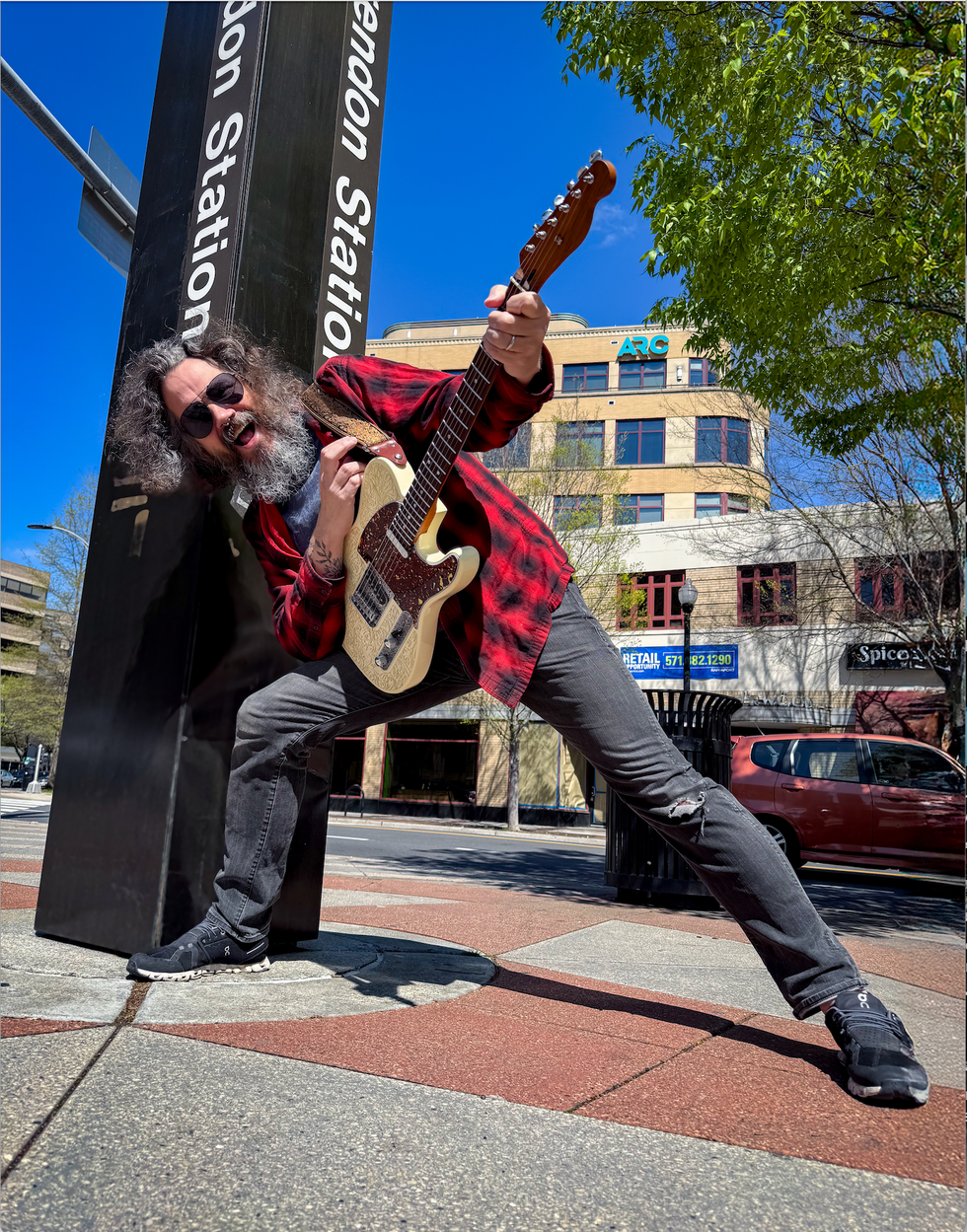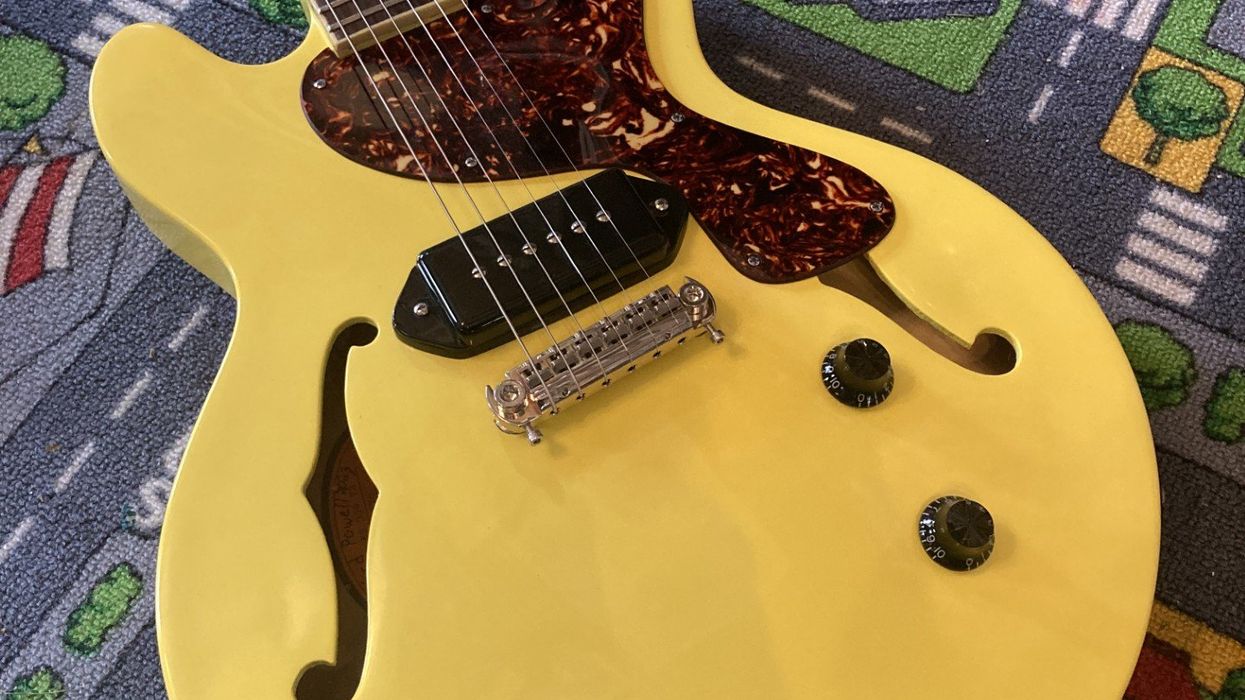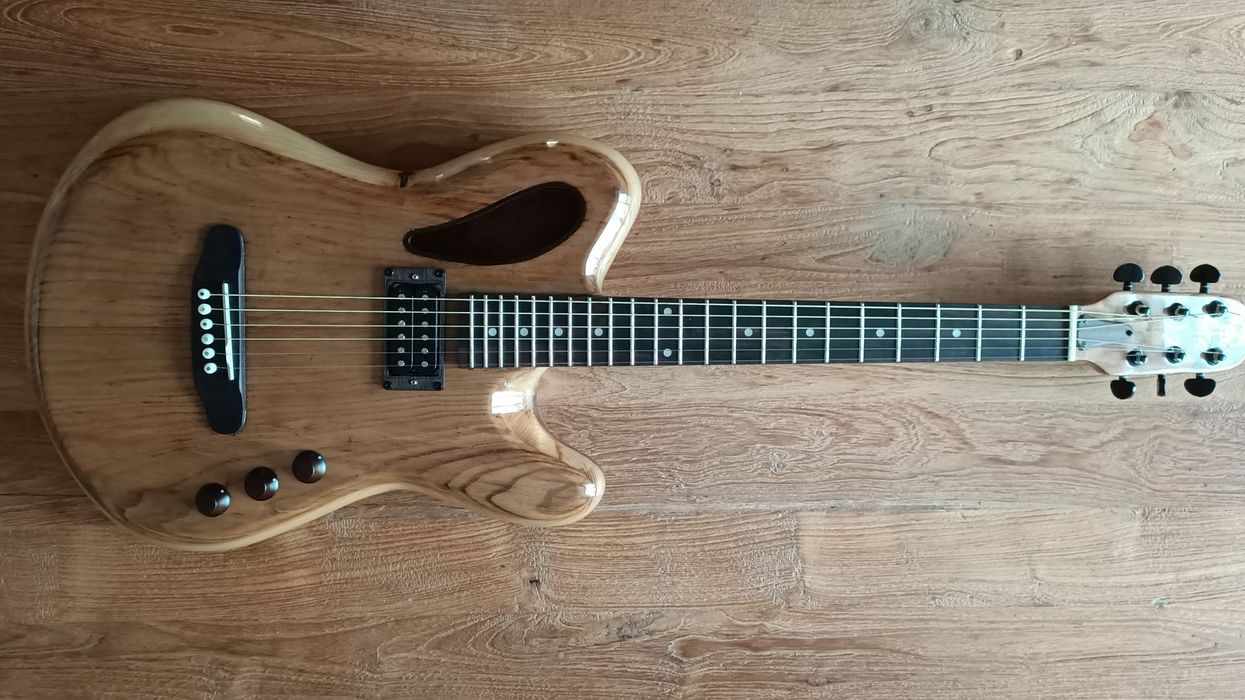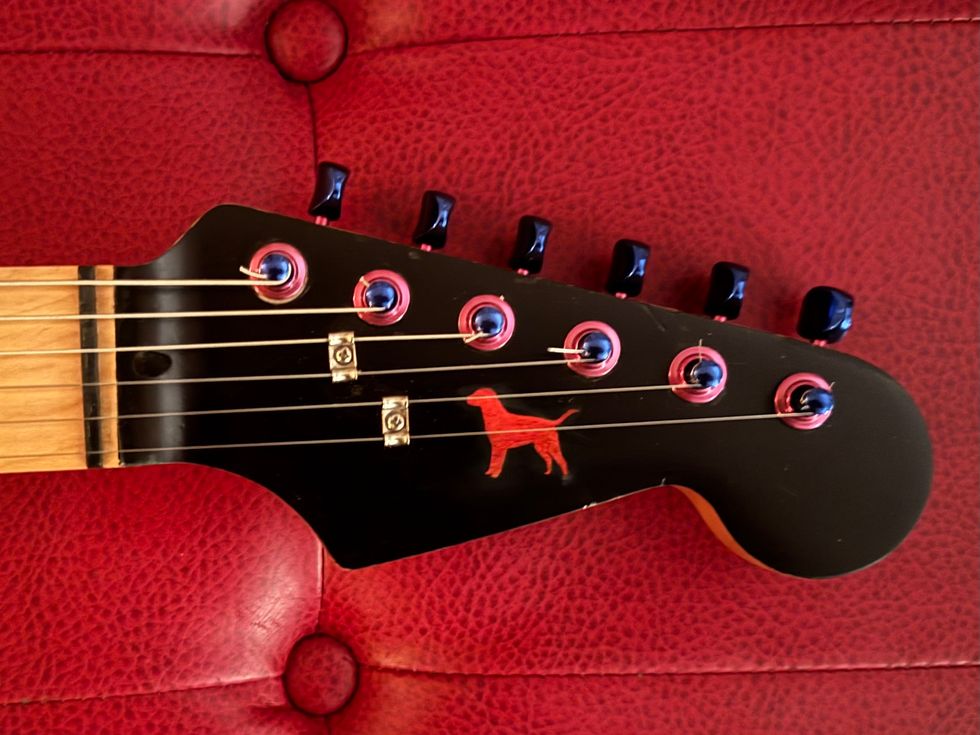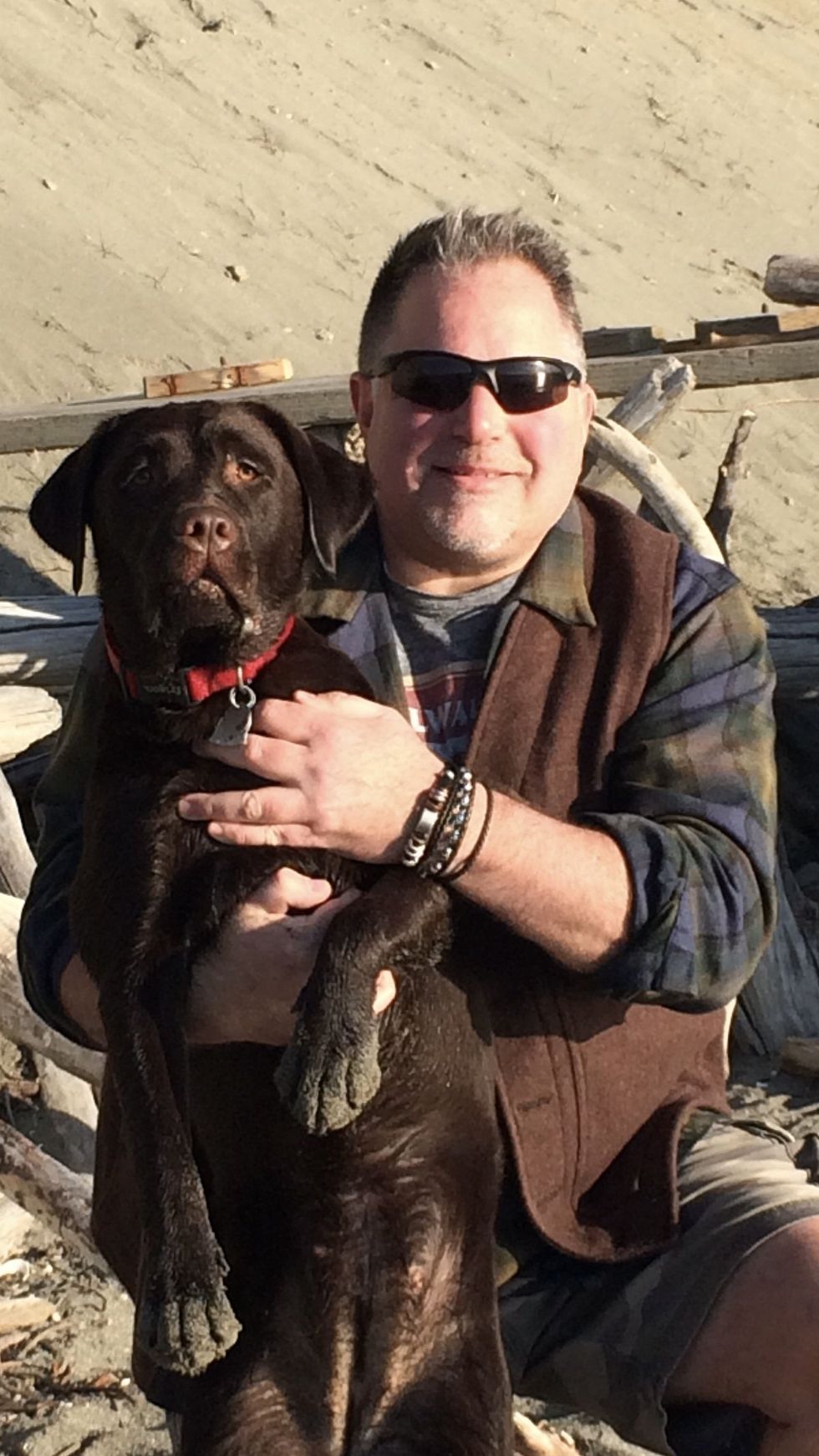A 6-string hound that’s still barking nearly 40 years after it's birth.
I am named after my mother’s father, Jonathan Schairer, who was a luthier/repairman in the Boston area in the late 1800s. He passed away when my mother was a little girl, but somehow, I inherited his skills. I would take the violin he built out of its case as a little kid and just marvel at it. I was always asking Mom how and when he made it, and too many other questions she couldn’t answer.
In 1984, when I was 23, I borrowed Jeff Tyrell’s ’76 Stratocaster. Jeff was a local fixture around the Attleboro, Massachusetts, and Providence music scene from the 1970s through the 2000s. I took his guitar apart (without his permission, mind you), measured everything with calipers, drew plans, made templates, and started my own. A local shop provided a poplar blank glued up from nine laminations! I bought a plain maple board and carved a 1-piece neck from it. I had intended it to be a replica of a ’50s-era Strat, but at that point, I only knew what they looked like from photos. The neck was my interpretation of what I thought a V-profile neck felt like, and the body, of course, had the weak contours of Jeff’s CBS-era Strat. It was built on a Stanley Workmate. My tools: clamps, chisels, a router, a violin knife, my dad’s machinist square. I had access to a drill press and a three-wheeled bandsaw, on which I broke three blades while cutting out the body!
“I was always asking Mom how and when he made it, and too many other questions she couldn’t answer.”
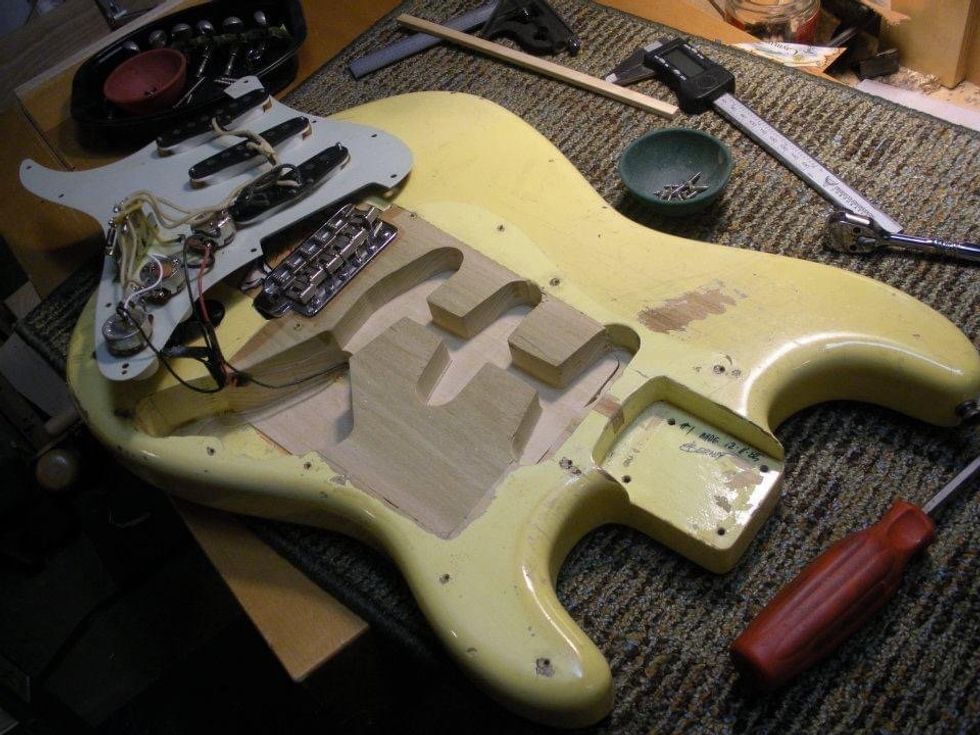
Along the way, the guts of a DOD overdrive made it inside this S-style.
Another local legend, Glen Markel, who repaired guitars for touring acts passing through, applied the nitro for me. I would hang with Glen in his shop and ply him with a thousand questions, take notes, return home, and then apply what I absorbed. I can’t thank him enough. I also read everything I could find on guitar repair and construction as a young man.
Since then, I’ve modified the guitar countless times. I swapped the original Fender trem out for a Kahler, then a Floyd Rose; the DiMarzio pickups for EMGs, then finally Texas Specials. I even took the innards from a DOD overdrive and installed them under the pickguard. The ’80s were not kind.
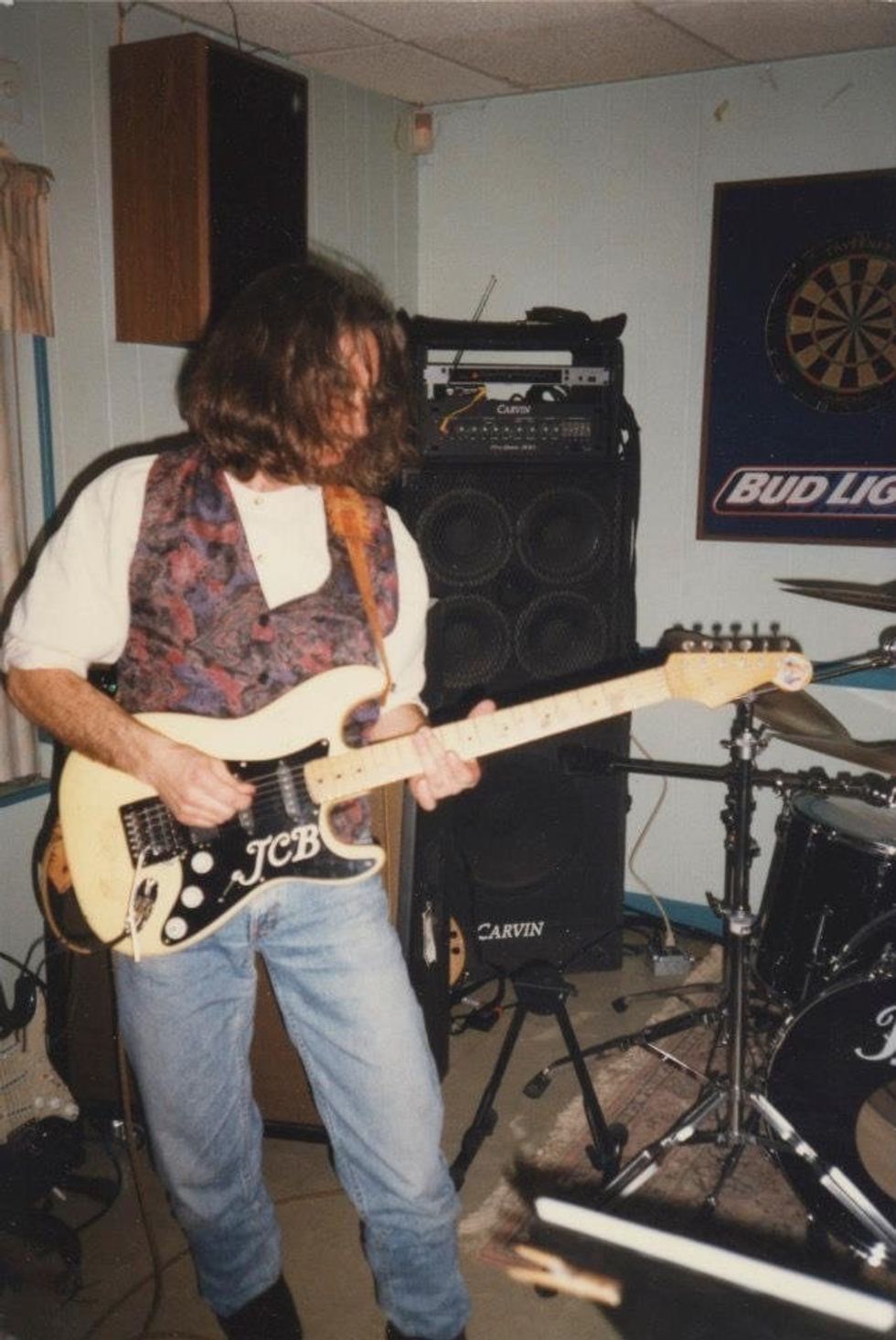
The JSB Strat in action.
We now live in Virginia and, at 62 years of age, I have made more than 20 guitars. Just prior to moving here, I dropped in to say so long to Jeff in New England. He had sold the very Strat that I took apart to build mine, despite my repeatedly asking him to call me if he decided to sell it. Ironically, a week later I saw it at the local Guitar Center on the wall and bought it on the spot. Jeff passed away about two years later, and I have since foolishly sold his Strat that started this crazy journey. But whenever I pull mine from its case, it feels like coming home.

If your story is chosen, you’ll also receive a $100 virtual gift card from Allparts, the industry’s leading supplier of guitar and bass parts! All entrants will receive a 20-percent-off coupon to allparts.com.
Please note that the coupon cannot be combined with other promotions.


